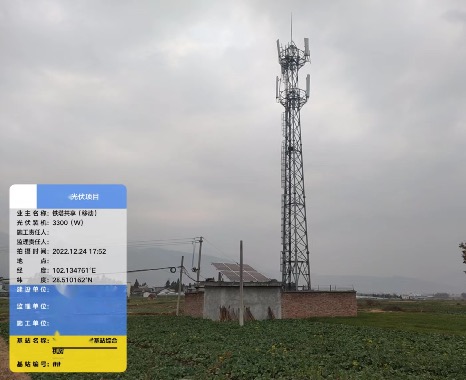Base Station Status and Trends
5G base stations are public mobile communication base stations that are dedicated to providing 5G network services. 5G base stations are mainly used to provide 5G air interface protocol functions and support communication with user equipment and the core network. According to logical functional division, 5G base stations can be divided into 5G baseband units and 5G radio frequency units, which can be connected through CPRI or eCPRI interfaces.
On June 6, 2019, the Ministry of Industry and Information Technology issued 5G commercial licenses to China Telecom, China Mobile, China Unicom, and China Broadcasting Corporation, marking the official entry of my country's 5G into a new stage of commercial promotion and development. my country's IMT-2020 Promotion Group divides 5G application scenarios into: continuous wide-area coverage, hotspot high-capacity, low-power large-connection, and low-latency high-reliability. The four scenarios correspond to 5G's high- and low-frequency resources respectively.
According to the coverage range, 5G base stations are divided into macro base stations and small base stations. 5G small base stations refer to base stations with a coverage range within 200m.
In recent years, as my country has officially entered the 5G commercial stage, 5G small base stations have entered a stage of rapid growth. From 2018 to 2022, the market size has increased from 3.216 billion yuan to 14.4 billion yuan, with a compound growth rate of 34.96%.
In recent years, the three major domestic telecommunications operators have announced their “dual carbon” goals:
China Mobile proposed that by 2025, the total carbon emissions will be controlled within 56 million tons, while the total amount will increase by 1.6 times;
China Telecom proposed that during the 14th Five-Year Plan period, the total comprehensive energy consumption/carbon emissions of telecommunications services will drop by 23%, and the power saving rate of newly built 5G base stations will be no less than 20%;
China Unicom proposed to strive to peak the growth rate of total energy consumption by 2023. As the power generation industry reaches its peak and green electricity trading progresses, it will strive to peak total carbon emissions ahead of schedule in 2028.
Low-carbon operation of communication base stations is one of the important measures for operators to help achieve the dual carbon goals. The three major operators and Tower Energy have begun to deploy photovoltaic communication base stations in various provinces, utilizing existing rooftops or site conditions to invest in the construction of communication base stations equipped with photovoltaic power generation.
In order to cope with climate change and achieve the United Nations SDG sustainable development goals, carbon neutrality has become the most urgent mission in the world today. Currently, operators around the world still have 600,000 diesel engines in operation, with high fuel costs and about 20 million tons of carbon emissions each year.
Now, many operators around the world have adopted fuel conservation, energy saving, green and low-carbon development as their sustainable development strategy, and have begun to use photovoltaics as the main power supply for base stations. It is expected that 100% renewable energy power supply will be achieved in 2025-2040.
★ Power consumption supervision and electricity theft monitoring
Monitor and compare the base station's incoming and outgoing line loops, monitor the line power usage in real time, and determine whether other devices are connected and stealing electricity based on the maximum power.
★ Electricity bill statistics by user
The electricity consumption data of the communication equipment of China Mobile, China Unicom and China Telecom are collected and used for internal settlement within the tower company as the basis for charging.
★ Energy saving control
Energy saving and consumption reduction of base stations can be achieved by controlling the start and stop of air conditioners, adjusting the working mode of communication equipment, or controlling the start and stop.
★ Green electricity monitoring, carbon emission analysis
Real-time monitoring of wind and solar power generation data, converted into standard coal and CO2 emission reductions.

solution
Schematic diagram of base station power distribution structure and monitoring points
Working mode:
First, when there is sufficient sunlight, solar energy is used to power the DC load and charge the battery at the same time. The DC output is output through the inverter to supply the AC load (it can efficiently utilize solar energy and sell the surplus energy to the national power grid. It can also realize the energy allocation of the power grid during peak and valley periods, creating higher commercial value). When the sunlight is insufficient, solar energy and batteries power the AC and DC loads at the same time. When the battery is at low voltage, the AC power input rectifier module is used to power the load and charge the battery at the same time.
Base Station Energy Efficiency Management Solution
System platform functional composition
Typical Hardware
Base station AC power distribution monitoring instrument(AC Power Consumption Monitor)
Base station DC power distribution monitoring instrument
Matching current transformer
Supporting Low Power Hall Sensor
Base station power distribution monitoring system project case
 English
English












